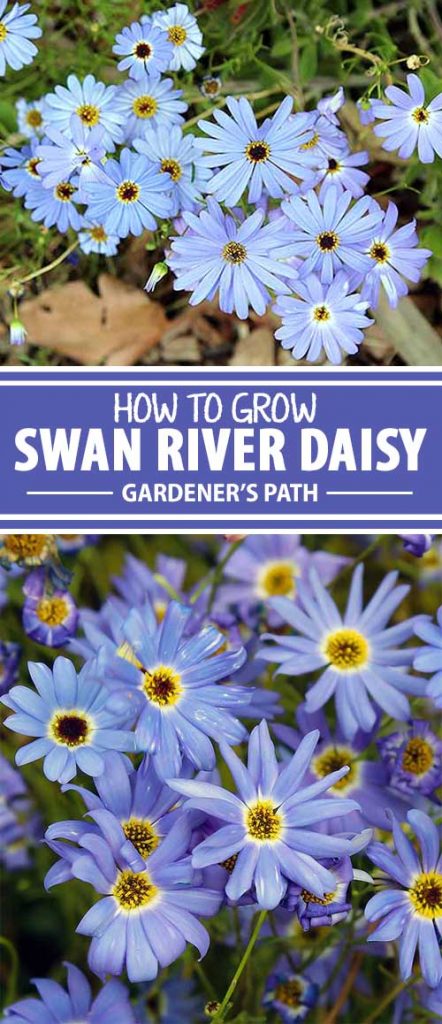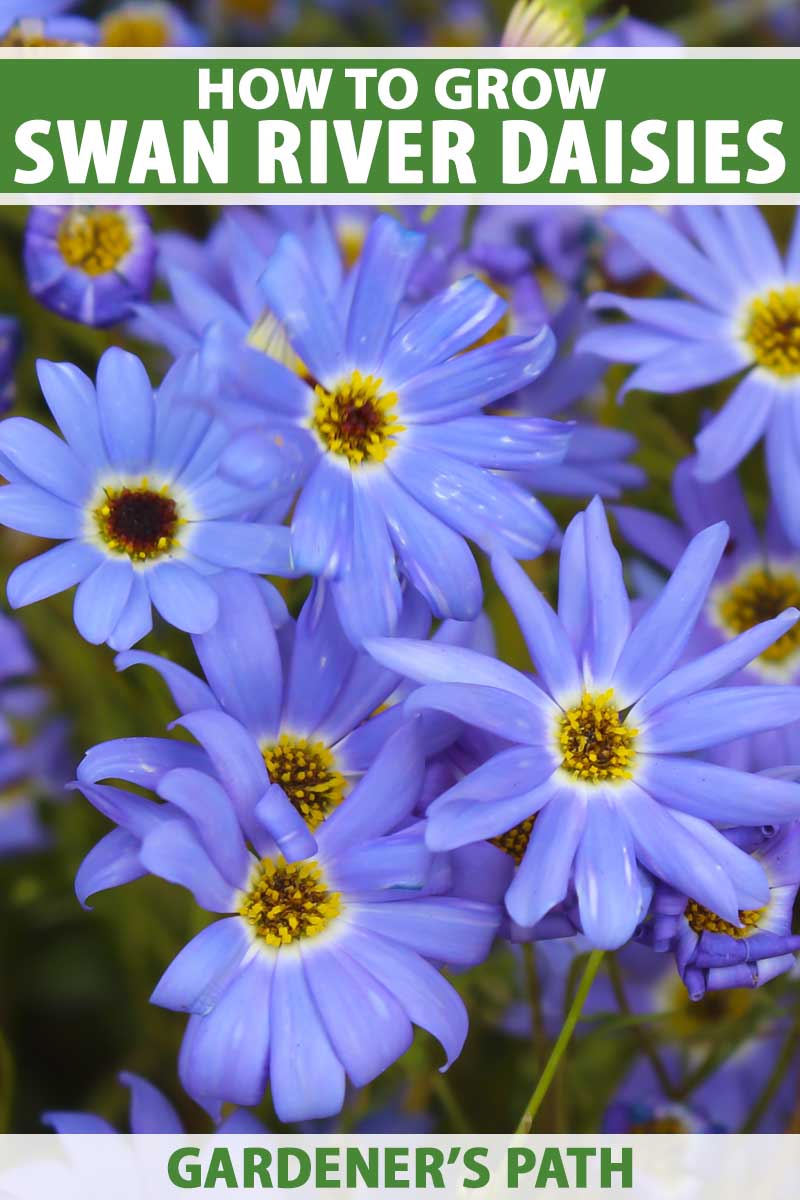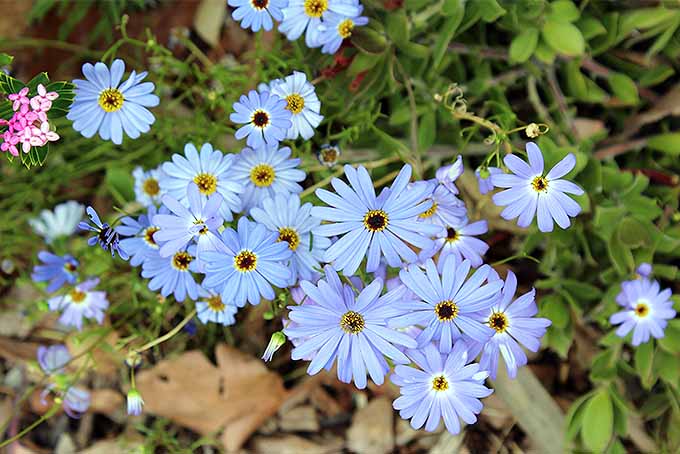Though this blooming beauty is available with lavender, pink, or white flowers, it’s the varieties with the striking blue daisy-like flowers that really catch our attention, especially when massed groundcover-style. While generally classified as an annual, this drought-tolerant, fragrant jewel may function as an herbaceous perennial in Zones 8-10. We link to vendors to help you find relevant products. If you buy from one of our links, we may earn a commission. In addition to being used to cover large swaths of a garden bed, many gardeners use this member of the Asteraceae family in borders and in containers. It grows to a mature height of one to three feet, with a spread of one to one and a half feet.
The foliage of this plant – whose scientific name is sometimes spelled “Brachycome” without the “s” – is many-branched and sports light green, finely divided leaves with long and narrow segments. Swan River daisy’s one-inch flowers are profuse across the plant. You’ll want to deadhead the spent flowers to promote continued blooming.
Let’s Get Growing
You can propagate from seeds started indoors six to eight weeks before your average last frost date. You can also sow directly in the garden after the last frost date. Some gardeners like to sow successively every two to four weeks throughout the summer to enhance the bloom period. Low-maintenance B. iberidifolia isn’t terribly picky about its soil, tolerating poor dirt but thriving in rich soil, as long as the ground is well-drained.
Expect birds and butterflies to enjoy these flowers as much as you do, and be grateful that rabbits and deer are likely to eschew this plant. For plants in the ground, fertilize at the beginning of the growing season, and then monthly. Espoma 5-10-5 Garden Food Fertilizer This plant isn’t plagued by pests to any large degree, but you will want to keep an eye out for snails and slugs.
Growing Tips
Plant in a full sun location Be careful not to overwater Fertilize monthly with 5-10-5 (NPK)
Where to Buy
Purple Mix B. iberidifolia Seeds This mix of 200 seeds will yield a stunning collection of flowers in shades of purple, blue, violet, and lavender. Hot Pink Mix Swan River Daisy Seeds You’ll get 12 seeds in a packet and you can expect these plants to grow to be about 20 inches tall.
Indigo Delight
It’s always fun to find a profuse bloomer that offers an explosion of color from the blue end of the color spectrum, and this treat from the Southern Hemisphere delivers.
Try B. iberidifolia as a groundcover, a border plant, or in containers. You will be thrilled by this versatile, attractive, and fragrant annual that’s unquestionably a worthy addition to your landscape. Have you grown Swan River daisy? Share your experience in the comments section below. If you’re looking for more blue beauties, check out our article about Jacob’s ladder. And if daisies are your thing, try then some of these other varieties are worth taking a gander at:
How to Grow African Daisy (Cape Marigold) How to Grow and Care for Painted Daisy How to Grow Blackfoot Daisy
© Ask the Experts, LLC. ALL RIGHTS RESERVED. See our TOS for more details. Product photos via Espoma, Seedville, and My Seedy Needs. Uncredited photos: Shutterstock.






